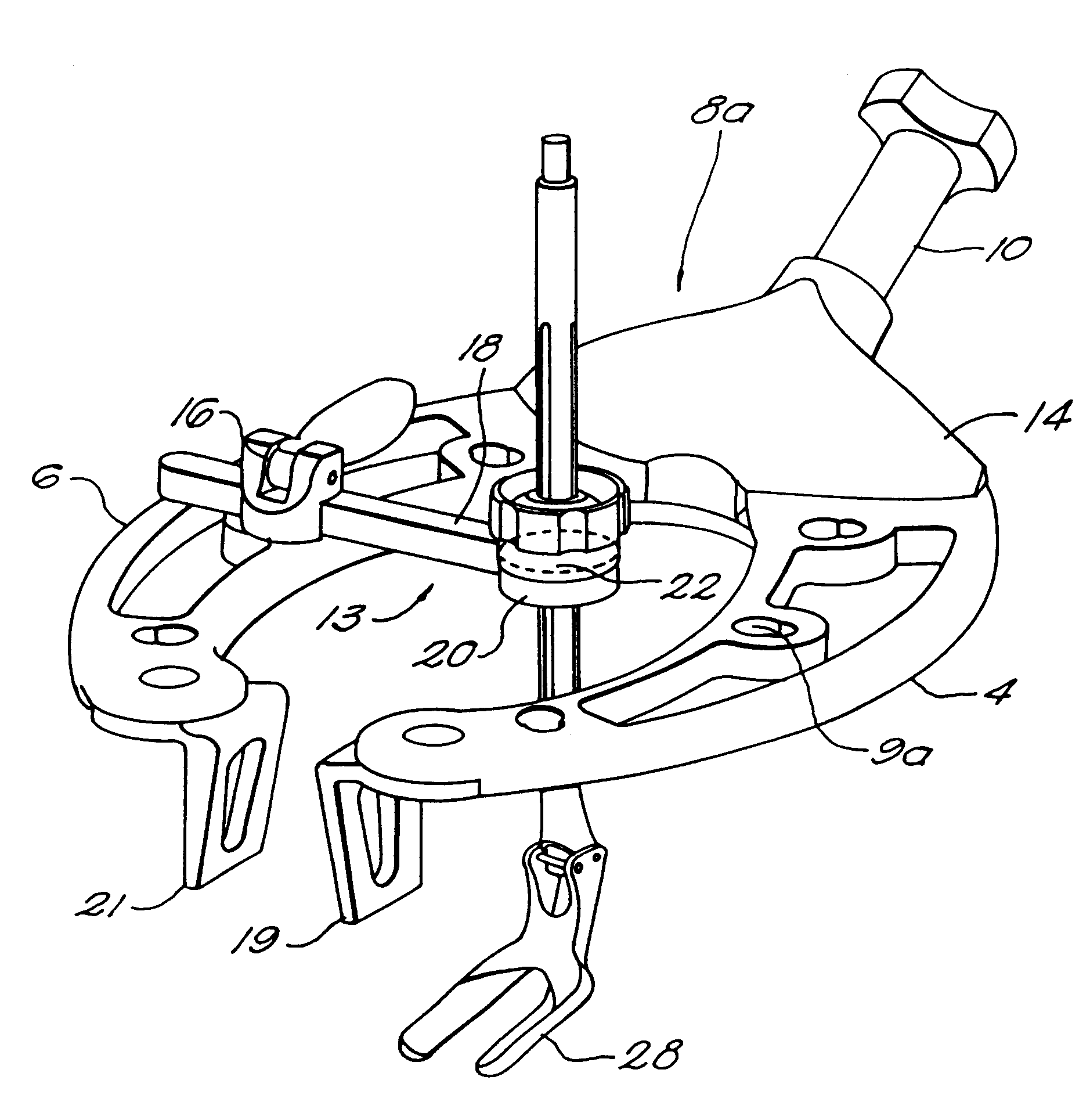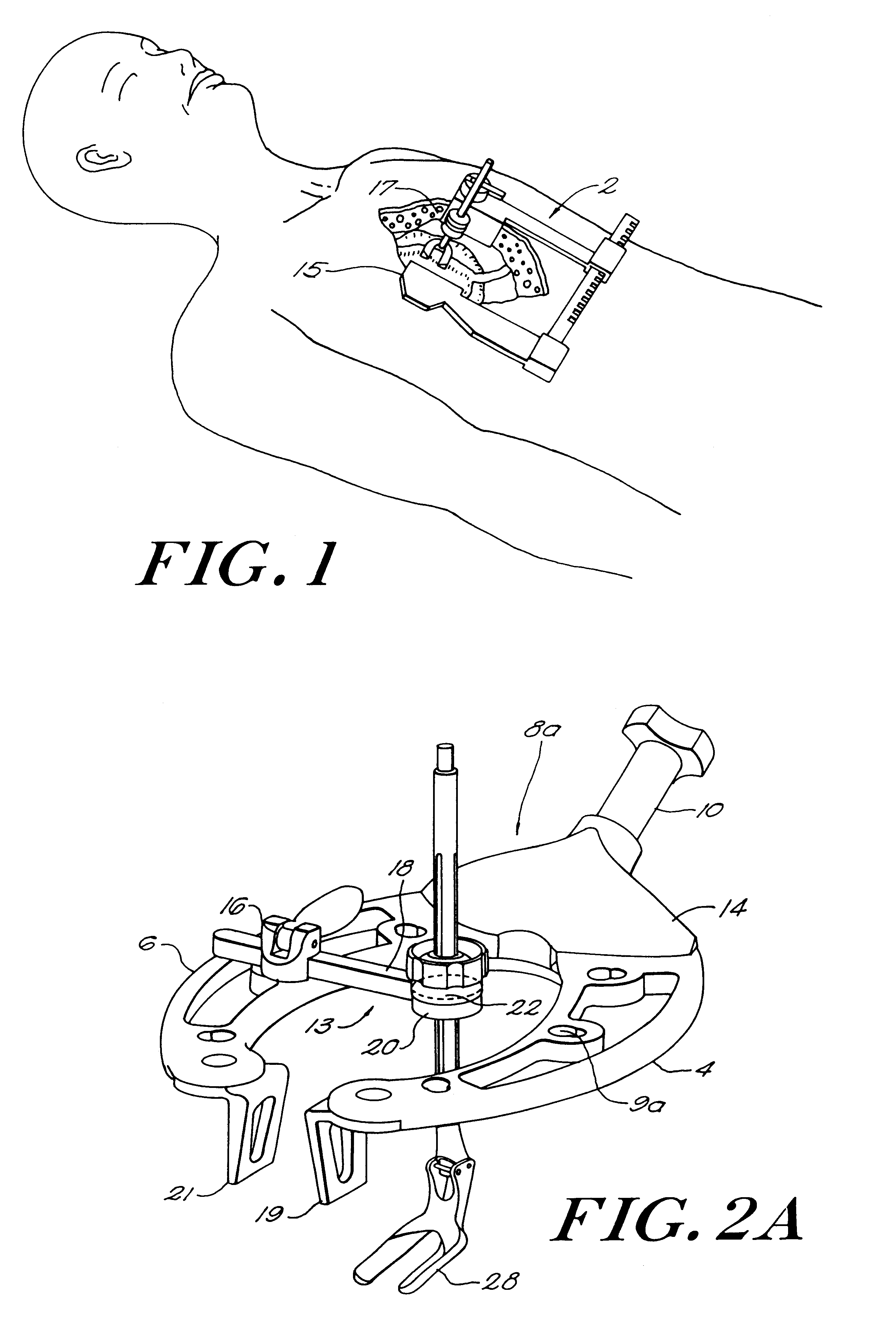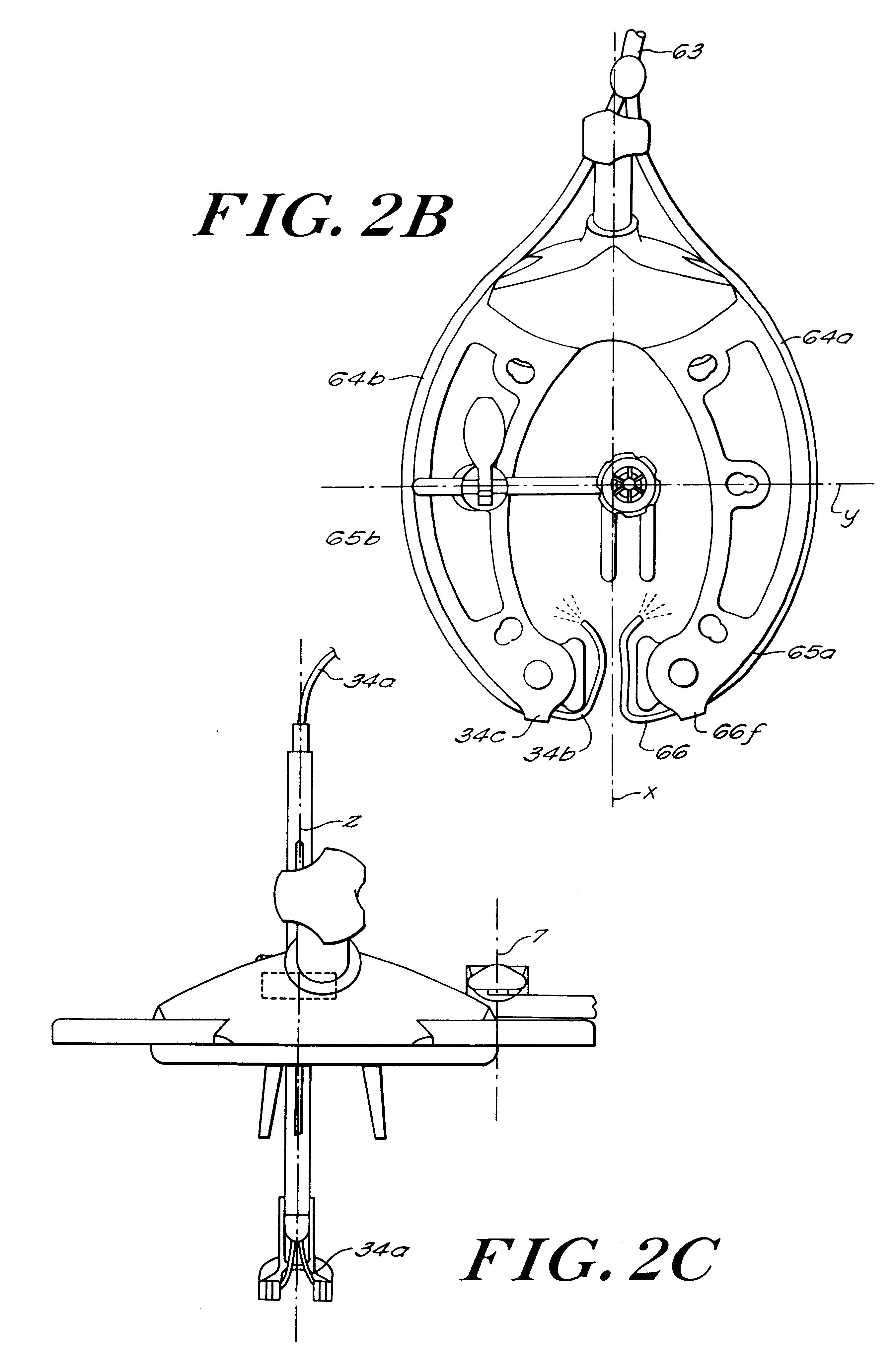Minimally invasive surgical apparatus
a surgical device and minimally invasive technology, applied in the field of surgical retractor devices, can solve the problems of not having complete access to the surgical field, devices that are not particularly effective in limiting the motion of the heart, and the operation on a beating heart is technically difficult, so as to facilitate the access to the opening mechanism, stabilize the retractor, and reduce the trauma to the patient
- Summary
- Abstract
- Description
- Claims
- Application Information
AI Technical Summary
Benefits of technology
Problems solved by technology
Method used
Image
Examples
example 2
Referring to FIGS. 11A-13, another embodiment of a retractor and surgical tool attachment system according to the invention comprises a retractor 102 for spreading and keeping back the walls of an incision in the patient. The retractor includes first and second retractor frame members 104 and 106. The second frame member 106 similar in configuration to the first frame member, has a toothed proximal end 157. The toothed proximal end of frame member 106 sits on the proximal end 159 of the first retractor frame member. An opening mechanism 150, sits on the proximal ends of the frame members and comprises a cover plate 155 and a series of gears 151. The gears fit into slot 143 in the second retractor frame member and a further slot 141 in the first retractor frame member. The retractor frame members pivot around a shaft 161 extending down from the cover plate. The cylindrical shaft inserts in slots 163 and 165 of second retractor frame and first retractor frame, respectively. The openin...
example 3
With reference to FIGS. 14A-15B, an embodiment of the retractor and surgical tool attachment system according to the invention comprises a retractor 202. The retractor includes a substantially L-shaped stationary section 208 which has a stationary frame member 204 and a moveable frame member 206. The moveable frame member, similar in configuration to the stationary frame member, has a toothed cross bar or rack 210 attached to it. The stationary frame member has a housing 212, which slides on the rack. The substantially L-shaped stationary section also includes an opening mechanism crank lever 252. Rotating the crank lever rotates a gear in the toothed cross bar of the moveable frame member alternatively moving the moveable frame member in or out.
Both frame members include universal mounting grooves 270. These mounting grooves allow an extension device 213 to be slideably positioned along the frame member within the groove.
The extension device includes a push-button clamp assembly 21...
example 4
Referring to FIGS. 16A-17B, another embodiment of a retractor and surgical tool attachment system according to the invention comprises a retractor 302. The retractor incorporates the general shape of Example 2 with the universal mounting groove of Example 3. The opening mechanism comprises a foldaway crank lever 352 a gear 357 attached to the crank lever, and, a cover plate 355. The retractor comprises a first retractor frame member 304 and a second retractor frame member 306. The proximal end of the second retractor frame member sits on top of the proximal end of the second retractor frame member. The opening mechanism sits on the proximal ends of the frame members 304 and 306. The proximal end of the second retractor frame member 306 has a slot 393 with ratchet teeth 392. The gear 357 of the opening mechanism fits in the slot 393 of the second frame member 306. By turning the crank lever 352 which is attached to the opening mechanism gear 357, the gear 357 rotates against the ratc...
PUM
 Login to View More
Login to View More Abstract
Description
Claims
Application Information
 Login to View More
Login to View More - R&D
- Intellectual Property
- Life Sciences
- Materials
- Tech Scout
- Unparalleled Data Quality
- Higher Quality Content
- 60% Fewer Hallucinations
Browse by: Latest US Patents, China's latest patents, Technical Efficacy Thesaurus, Application Domain, Technology Topic, Popular Technical Reports.
© 2025 PatSnap. All rights reserved.Legal|Privacy policy|Modern Slavery Act Transparency Statement|Sitemap|About US| Contact US: help@patsnap.com



